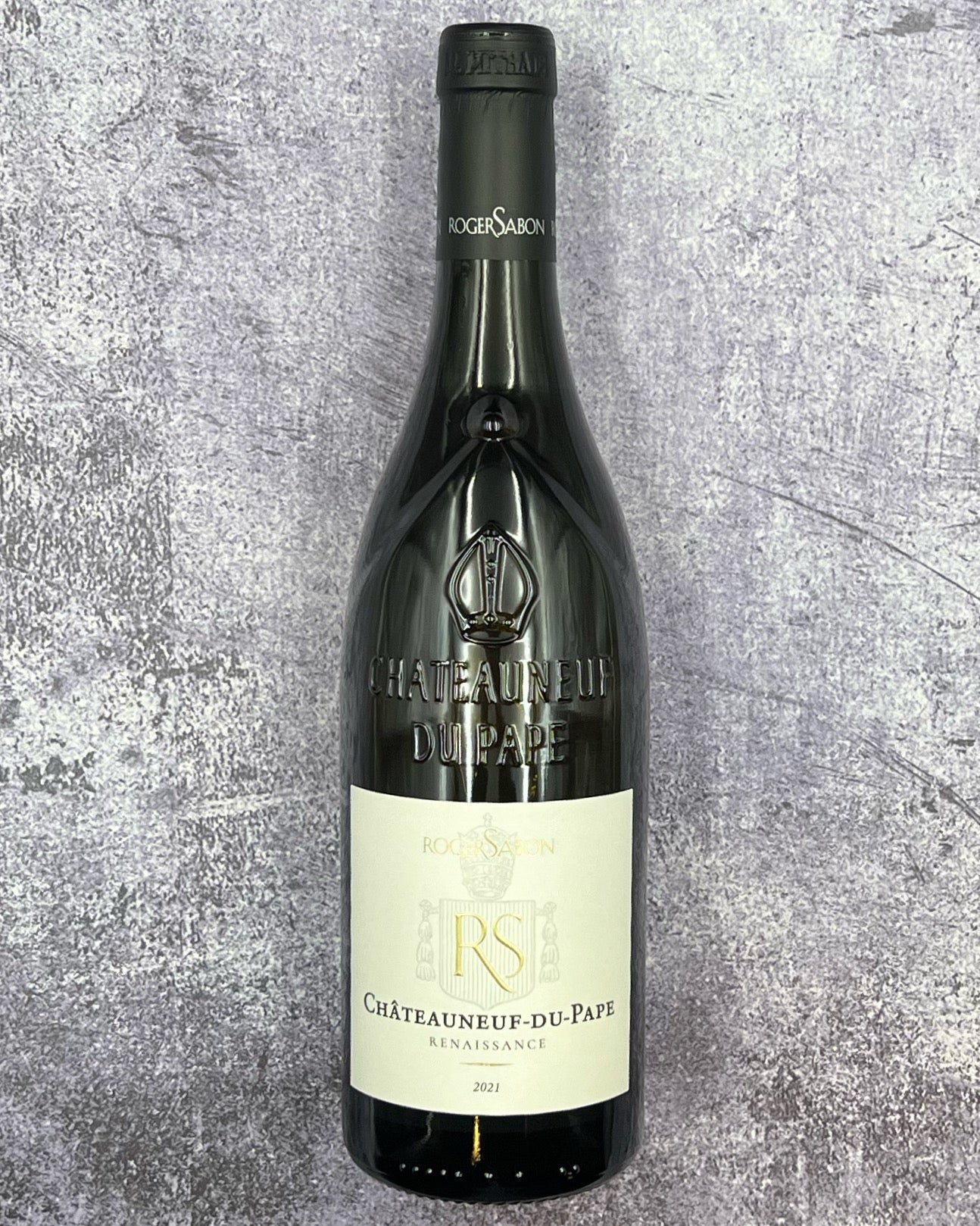Description
From: Châteauneuf-du-Pape, Southern Rhône, France
Varietals: 35% Roussanne, 30% Grenache Blanc, 20% Clairette and 15% Bourboulenc
Taste and Critical Acclaim: "The 2021 Châteauneuf-du-Pape Blanc Renaissance is a blend of 35% Roussanne, 30% Grenache Blanc, 20% Clairette and 15% Bourboulenc. It displays attractive aromas of spring blossom, honeysuckle, acacia, grapefruit, lemon peel and a tropical twist of melon and mango. Medium to full-bodied and framed by lively acidity, the 2021 Renaissance concludes with a bright finish." –Vinous, 93 points
Pairing: This wine will pair beautifully with a variety of dishes, from seafoods like crab, lobster, and fish, to poultry and duck, to vegetarian options including creamy asparagus soup and garlic mushrooms. On a weeknight, this would be a great sidekick to a plate of grilled salmon and asparagus (which is in season right now!).
For a taste of Southern French cuisine, consider pairing this elegant white wine with bouillabaisse, a classic Provençal fish stew, or brandade de morue, a salt cod and olive oil purée. The wine's acidity and richness will beautifully enhance the flavors of the dishes, creating a harmonious balance on the palate. This recipe for Langoustines with Caper Salsa and Balsamic and Oil-Dressed Leaves from the Food and Travel Magazine is another excellent option.
About, from the importer, European Cellars. The Sabon family is an ancient and well-regarded name in Châteauneuf-du-Pape, first mentioned in documents dating to 1540. Perhaps not as venerable as the Ameniers of Domaine de Marcoux and Domaine Giraud, but still eminently respectable. Seraphin Sabon, a more recent patriarch of the family, first bottled wine in the appellation under the family’s name in 1921. He also fathered three very enterprising sons, all of whom established their own Domaines: Joseph Sabon at Clos du Mont Olivet, Noel Sabon at Chante Cigale, and Roger Sabon. The Sabons are like the Crosby, Stills, Nash & Young of the village.
Domaine Roger Sabon was founded in 1952 and is currently run by Roger’s sons Denis and Gilbert. A third son, Jean-Jacques, is deceased, but his son-in-law Didier Negron is the current winemaker. Denis and his son Julien oversee the farming while Gilbert and his niece, Delphine, run the office. It is quite a family affair!
The size of the domaine has grown slowly over the years with 18 hectares in Chateauneuf du Pape, 8 hectares in Lirac and 8 hectares in Côtes-du-Rhône. Most of their holdings in Châteauneuf-du-Pape are located in the northeastern part of the appellation, where the soils are sandier with a high concentration of limestone. They also own a few parcels in Le Crau famous for its red clay under a deep layer of galets deposited from the alps eons ago. These two soil types combine to make wines that are equally rich and nuanced.
Since 2001 Didier Negron has made the wines at Domaine Roger Sabon, but recently he’s begun to move away from demi-muids and barriques in favor of aging his family’s wines in concrete and large French oak foudres. While the terroir of Roger Sabon, with its high concentration of sand and limestone, has always been inclined to a more ethereal and delicate style of Châteauneuf, Didier’s changes in the cellar have amplified these qualities – the wines have never been more engaging and lovely.
While Grenache is the mainstay at the Domaine, they also grow Syrah, Mourvedre, Cinsault, Terret Noire, Counoise, Vaccarèse Muscardin, Roussanne, Clairette, Bourboulenc and Grenache Blanc. They own some fairly old Syrah, about 60 years old, located on limestone soils which is an important component in the Prestige bottling. Their oldest vines, topping 100 years old, are located in two plots near Courthézon and are the Secret des Sabon source. While details are sketchy, and the Sabons are shy about divulging any information about this cuvée, it is safe to assume that these vines are primarily Grenache. There is a single demi-muid in the shadows in the cellar, which is presumably the Secret des Sabon, but once again, polite inquiries are met with a Gallic shrug.
Domaine Roger Sabon sources its white varieties from the lieu-dit of La Crau Ouest on sandy and chalky soils. Here the main varieties are Roussanne and Grenache Blanc (about 30% each) and slightly less Clairette and Bourboulenc (20% each) – but depending on the vintages these percentages change slightly. The vines are an average of 40-50 years old and farmed with certified organic (Ecocert) and some biodynamic practices. Each variety is harvested by hand when it is ripe, and then gently pressed with the juice going into a 25hl French oak vat where the wine ferments and ages for seven months before bottling in the spring after the harvest.

